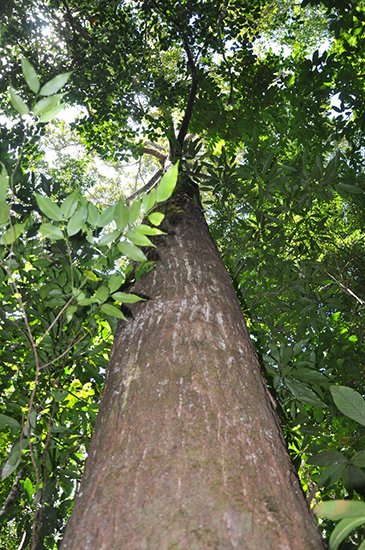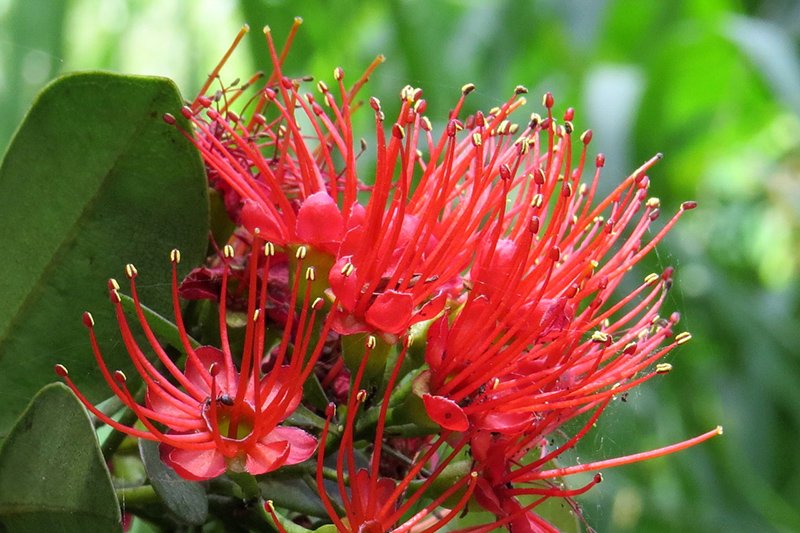An Arbor of Rare Trees in Pangasinan

Victor O. Ramos’ Alay: Philippine Native Trees
That was the seed of his dream. Just a house surrounded by trees, a retreat for his old age, when he could escape the city and the hectic life of public service. He had spent most of his adult life working with government offices, first with Rafael Salas after graduating from UP. After a stint with a private Swedish company he was hired as undersecretary of the Department of Environment and Natural Resources (DENR) under President Corazon Aquino and then secretary with President Fidel Ramos. In his fifties, he looked forward to an early retirement.
“I first thought of developing an arboretum when I was invited to join an environmental group called Philippine Native Tree Enthusiasts (PNTE) with a mission to help conserve our native trees. The members were propagating seedlings of native tree species which were being threatened by extinction due to over cutting. Most of these species were new to me. As i learned more about them, it dawned on me to expand my initial idea of just planting the few familiar trees that I grew up with in our hometown.”
It was important, first of all, to buy a piece of land that had a natural spring. He found a place in Natividad, Pangasinan, four hectares of a farm owned by the Miranda family. He consulted his friend Rod Bernardo, an environmental architect, and the two of them worked on plans for the property. Out of a rice field and swampland emerged the palette of a garden. A hectare was reserved for the spring, another hectare close to the main road was designated for public events, a third was for the family house, and the last quarter was for fruit trees.

Rene Navarro with Victor O. Ramos and Dr. Isidro Sia
That was exactly the way it looked the two times I visited. The first time I was there Vic took me to the house. We had a meal in the dining room, eight-sided in the sacred Taoist tradition of the Pa-Kua, and then he gave me a tour of the pond. There was an arching bridge over it to a small private island. I told him it reminded me of Claude Monet’s Giverny. He said that was exactly what inspired him and his wife, Marinella. On the second visit two of his friends and I planted trees. According to Vic, only my tree, a kupang (parkia timoriana), survived. (The photo he sent me showed that it had grown to at least 30 feet.) I was not able to see many of the trees on my two visits.

Construction phase

Part rice farm

The pond
A friend from college in the early 1960s and a colleague in the Banana Club, Vic had invited me to spend a weekend there. But every time I was in the Philippines, I was invariably scheduled to teach weekend seminars at INAM, an NGO and a healing and acupuncture center in Diliman. The arboretum was about a five-hour drive north of Manila so I had to plan a whole day just for the trip alone.
Five years was how long it took to prepare the land. Then the trees were planted in 1995. Victor was working as secretary of the Department of Environment and Natural Resources under President Fidel Ramos. He recalls that on his 50th birthday, friends who heard about his passion for native trees gifted him with “exotic trees, golden showers and golden coconuts, to mark my golden year, mahogany (Swietenia macrophylla), acacia (Samanea saman) and Gmelina arborea.”
To Vic’s surprise, the modest project began to grow beyond his initial expectations. “My collection started to build up with gifts from my new friends who propagated the seedlings in their private collection.” More and more trees were donated by friends and strangers alike.
To him, getting to know more about our trees has been an endless source of wonder and reflection. His discovery opened a whole new world: what our country had and what it was losing through over-use and ignorance. He was going to do something about it. His only regret? Well, he actually wanted to organize the location of the trees so that the same species would be standing in the same area, but it was impossible because the trees were planted as soon as they were acquired.

An aerial view of the arboretum
So far, there are more than 300 different trees in the arboretum.
Araceli Tungol, founder of the Philippine Tree Enthusiasts, says: “There are trees in the arboretum that we cannot to this day identify due to their rarity; trees that even foresters are unable to name.”
What are Vic’s favorite trees? “I have an evolving list of favorite trees. My early favorite was our national tree, Narra (Pterrocarpus indicus). It reminded me of my carefree years in grade school when a tall narra tree at the back of our school never failed to remind us about the end of school days and the beginning of summer vacation when it released its new flowers in March. As I got to know new species of trees, my list of favorites would inevitably increase. For instance, I found out that it was the Bago tree (Gnetum gnemon), whose tender leaves are used as common ingredients for salads favored by Visayans, was also one of the species that ushered in the genetic transition from gymnosperms (seed producing trees but without fruits) to angiosperms (trees that produce flowers and fruits).”

Bagras (Eucalyptus deglupta Blume) Popularly known as the rainbow tree because its colorful bark peels off year round, showing a variety of colors. It is the only Eucalyptus that thrives north of the equator.

Dalingdingan (Hopea foxworthyi Elmer) A medium-sized dipterocarp species endemic to Sibuyan, Romblon. The wood is tough but smooth in texture which makes it ideal for furniture-making.

Supa (Sindora supa Merr) Also known kerosene tree due to its natural oil used for lighting by the indigenous people. Also preferred material for the flooring of bowling alleys.

Tindalo (Afzelia rhomboidea (Blanco) Fern.-Vill.) Very rare and one of the finest wood for musical instruments and high-grade construction
His plans for the arboretum?
“The arboretum will serve as a source of seeds for propagation with every tree being nurtured as a mother tree. I also would like the arboretum to be a learning center for the young students in the nearby towns with hopes that they will be inspired to help conserve our natural heritage.”
Vic Ramos has not stopped planting trees. During the summer months he collects trees and plants them during the rainy season. He says that it is like the labor of Sisyphus: many of the trees die because of the extreme summer heat but he plants trees again and again.
To him, getting to know more about our trees has been an endless source of wonder and reflection.

Bagras flower

Mangkono Xanthostemon verdugonianus

An evergreen shrub usually growing along the riverbanks of Galing river in Sibuyan, Romblon. Sometimes found in parks for its yellow flowers.
When Vic gave me a copy of the book about his arboretum, I saw the different photos and realized how comprehensive his collection was. I promised myself that next time I visited the Philippines I would schedule a weekend to tour the whole Victor O. Ramos Arboretum, all four hectares of it, and see all of the 300 trees there. The place is a real and enduring legacy.
This article is based on an interview with Victor O. Ramos and on the book “Alay: Philippine Native Trees at the Victor O. Ramos Arboretum” by Pastor L. Malabrigo and Arthur Glenn A. Umali (VJ Graphic Arts, Inc.,2022).

Rene J. Navarro, 84, is a practitioner of acupuncture, arnis de mano, Yang-Sheng/Nourishing Life regimen, and Taoist alchemy. He has written 2 books: “Ascension and Return: Poetry of a Village Daoist” and “Of Fire and Water: Alchemy and Transformation” both published by Tambuli Media.
More articles from Rene J. Navarro


No comments: